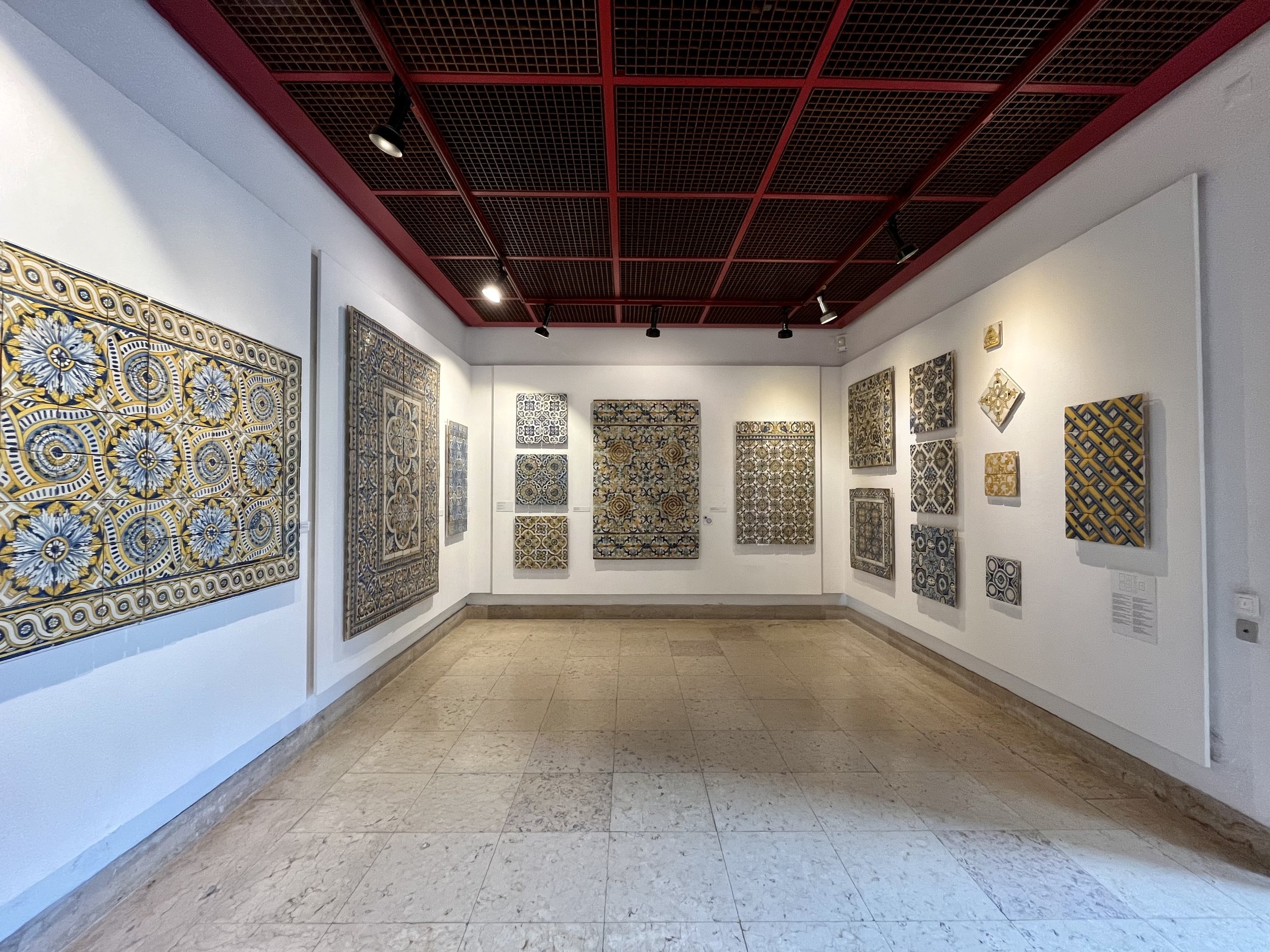The National Tile Museum
The National Tile Museum (Museu Nacional Do Azulejo) is a bit outside the regular tourist routes, but packs a two for one deal. First, it’s a museum dedicated to the history of the Portuguese tiles dating all the way back to the mid 1400’s. Second, if tiles aren’t quite enough incentive to make the trek, the building itself is a wonderful piece of old world history and definitely worth a visit.
The entrance to the museum which was a former Convent of Madre de Deus, founded in 1509 and has since gone through multiple additions and changes.
The museum starts in chronological order, showing the earliest themes and styles of tiles.
Early ceramic designs depicted geometric shapes in the Hispano-Moresque style.
The altar piece of Our Lady of Life (16th century) is the tallest piece here stretching two stories.
The sunny green, but slightly forlorn-feeling cloister is a beautiful place to take a break.
A full circle around the cloister gardens, reveals some areas of the museum that are not enterable. Back in the 1888 this building acted as a storage place for tiles removed from old palaces and religious sites.
Just when things were starting to feel a little “museumy”, we entered this. The museum preserved much of the chapel areas from the original convent. This is the Lower Choir room, a stunning prequel to the church.
And…the church. Enough said.
The staircases in this museum are lined with blue tiles, but there is a staircase that goes nowhere and is for display only to show this staircase panel which came from another former monastery in Lisbon.
Labeled only on the map as “Small Cloister”, it is a small quiet area surrounded by and containing unique pieces of art and one of the remaining parts of the original convent from the 1500’s.
Inside the Santo António Chapel, the walls are covered in more blue tiles depicting scenes from the life of the patron saint of Lisbon. However, it is the ornate cabinet containing the nativity scene which steals the show.
The High Choir, located on the Floor 1 (not the ground floor) contains cases of reliquaries. At the end of the room is a glassed viewpoint that overlooks the main church.
The museum also has modern and contemporary ceramic works (both tilework and non-tilework). This is “Vicente and the Dragon” by António Vasconcelos Lapa (2005).
Floor 2 consists of a large rectangular room which holds a 23 meter long panorama of Lisbon prior to the 1755 earthquake. This is a very small section of it. A helpful guide underneath documents the buildings depicted.
The panorama is a great piece of historical record, and while some things may have changed after the earthquake, some things remained the same. This is how the National Tile Museum (as the former Convent of Madre de Deus) looked back in the day.














